Mauritius is one of the most beautiful and diverse tropical destinations in the world. The island will immediately captivate you when you visit - I guarantee you that. However, before you travel to the island for the first time or even yours Book a vacation, you should take a look at our Mauritius FAQs (frequently asked questions) to get a rough overview of the island. Below I have listed the most frequently asked questions about your Mauritius vacation. If you read it carefully, you'll definitely get a first impression of the island - and get the most out of it travel planning begin.
Mauritius is a beautiful island Indian Ocean, which delights many travelers with its diversity, beauty and hospitality. If you are planning a vacation to Mauritius, you probably have a lot of questions that you would like answered. Below you will find the answers to the most common questions you should ask yourself before your trip. This way you can optimally prepare for your Mauritius vacation and make the most of your stay.
What you should know about Mauritius
Blog | Travelogue | beaches | Hotels | Best coast | Most beautiful places | points of interest & sights | Diving | snorkeling | Wildlife | Dolphins | Hedge | Travel Tips | Rental car | Travel information | Best time to travel | location | FAQ
Video – What you need to know before traveling to Mauritius
Book your well-deserved vacation now!
Book your dream vacation now at favorable conditions on the renowned booking portal HolidayCheck – top rated by Stiftung Warentest (01/2024). Click and browse now!
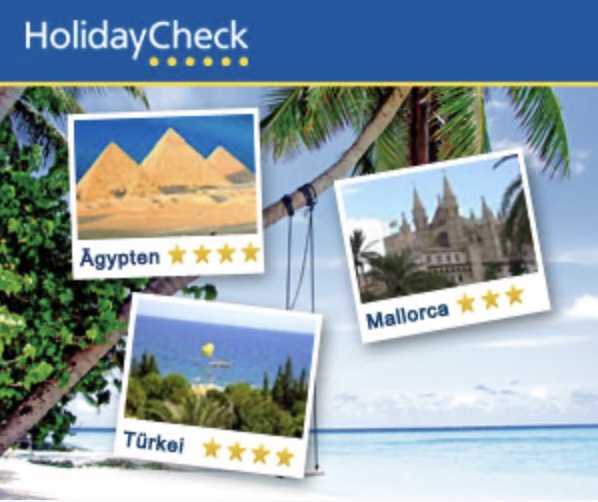
Frequently asked questions (FAQs) about vacationing in Mauritius
Below I have listed the most important questions and answers about your Mauritius vacation. I hope these answers help you plan your trip as well as possible and have the time of your life in Mauritius.
Which coast in Mauritius is the best?
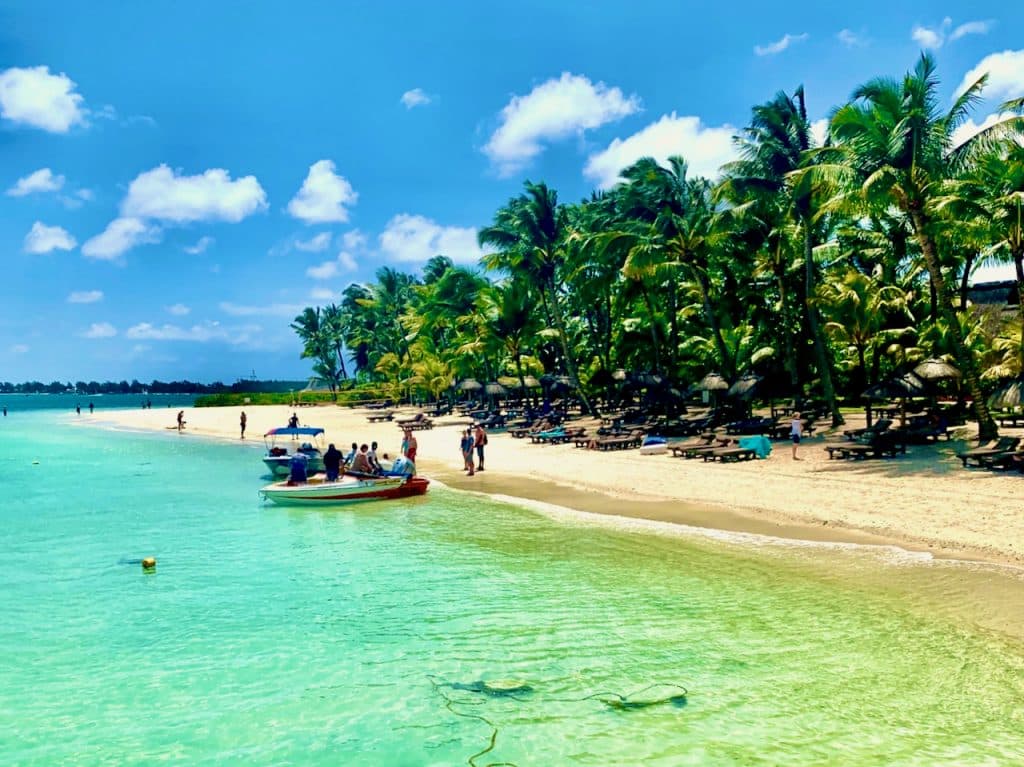
Which coast of Mauritius is the best depends on your personal preferences and interests. Each coast has its own advantages and attractions. Here is an overview:
North Coast:
Popular for: Beach life, water sports, nightlife and shopping.
Highlights: Grand Baie (a popular tourist resort with numerous restaurants, bars and shops), Pereybere, Trou aux Biches and Mont Choisy.
For whom: Those who like busier beaches, a variety of activities and a lively atmosphere.
West Coast:
Popular for: Spectacular sunsets, water sports and a mix of busy and quiet beaches.
Highlights: Flic en Flac (a long, beautiful beach), Tamarin (known for surfing), and the Black River area.
For whom: Families, water sports enthusiasts and those looking for both activities and quieter moments on the beach.
East Coast:
Popular for: Very idyllic and partly untouched beaches, luxury resorts.
Highlights: Belle Mare (long, white sandy beach), Île aux Serpents and Île aux Aigrettes nature reserve.
For whom: Peace seekers, romantics and those willing to spend more on luxury resorts.
south coast:
Popular for: Wild nature, dramatic cliffs, less developed beaches.
Highlights: Gris Gris (known for its cliffs and wild waves), Le Morne Brabant (a UNESCO World Heritage Site) and the Maconde Viewpoint.
For whom: Nature lovers, adventure seekers and those who prefer less touristy places.
Where to go snorkeling in Mauritius?
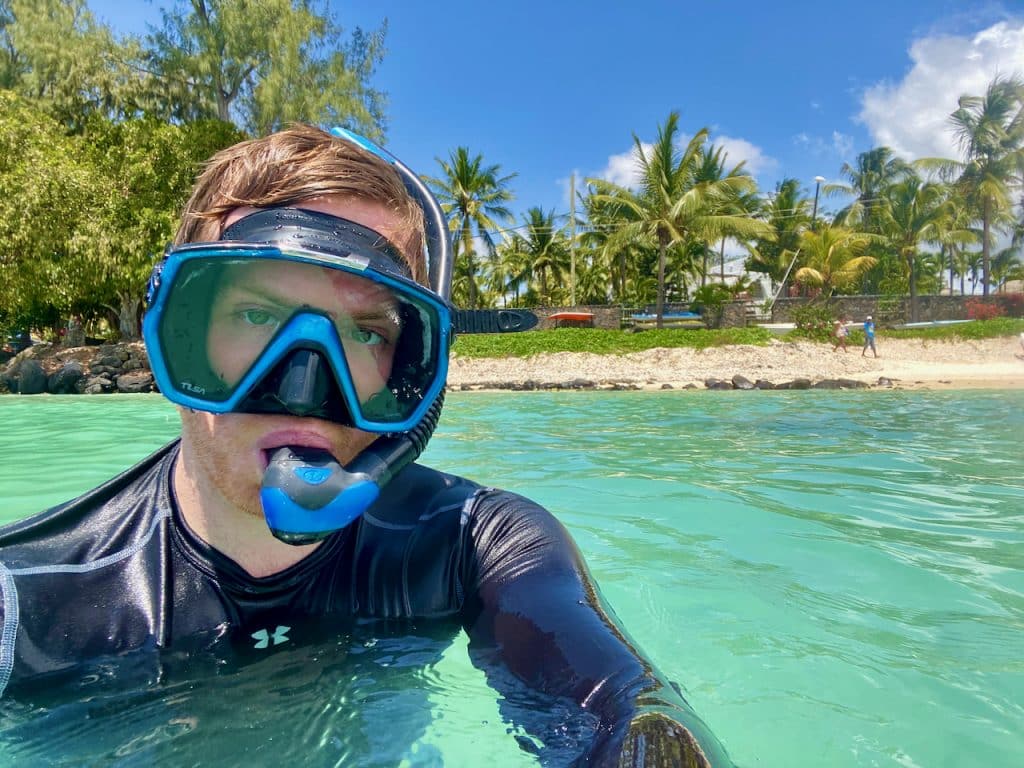
Mauritius, with its vibrant coral reefs and clear waters, offers numerous locations for excellent snorkeling. Here are some of the best snorkeling spots:
Blue Bay Marine Park: This marine reserve on the southeast coast is known for its crystal clear waters and an impressive variety of corals and fish. The Marine Park is easily accessible and is particularly suitable for beginners.
Ile aux Serpents (Snake Island): Although the name may sound daunting, there are no snakes here. However, the area is rich in marine life and is great for snorkeling.
Ile aux Aigrettes: A small island off the east coast known for its conservation initiatives. In addition to snorkeling, you can also observe rare and endemic plants and animals here.
Trou aux Biches: Located on the northwest coast, this beach offers a tranquil snorkeling spot with a variety of fish species.
Flic en Flac: Located on the west coast, this long beach offers diving opportunities in addition to snorkeling. The reef is rich in marine life, including some larger fish.
Pointe d'Esny: This less-busy beach on the southeast coast offers a tranquil snorkeling experience with lots of colorful corals and fish.
Le Morne: Located on the southwest tip of the island, this area offers many other water sports options in addition to snorkeling. The reef here is particularly lively and is home to a variety of fish species.
If you go snorkeling, always be careful and respect the local marine life. Avoid stepping on or touching corals as they are delicate and can be easily damaged. It is also advisable to wear water shoes to protect yourself from sharp corals or sea urchins. Some of the best snorkeling spots are only accessible by boat, so guided tours or excursions could be a good option to discover the best spots.
How dangerous is Mauritius?
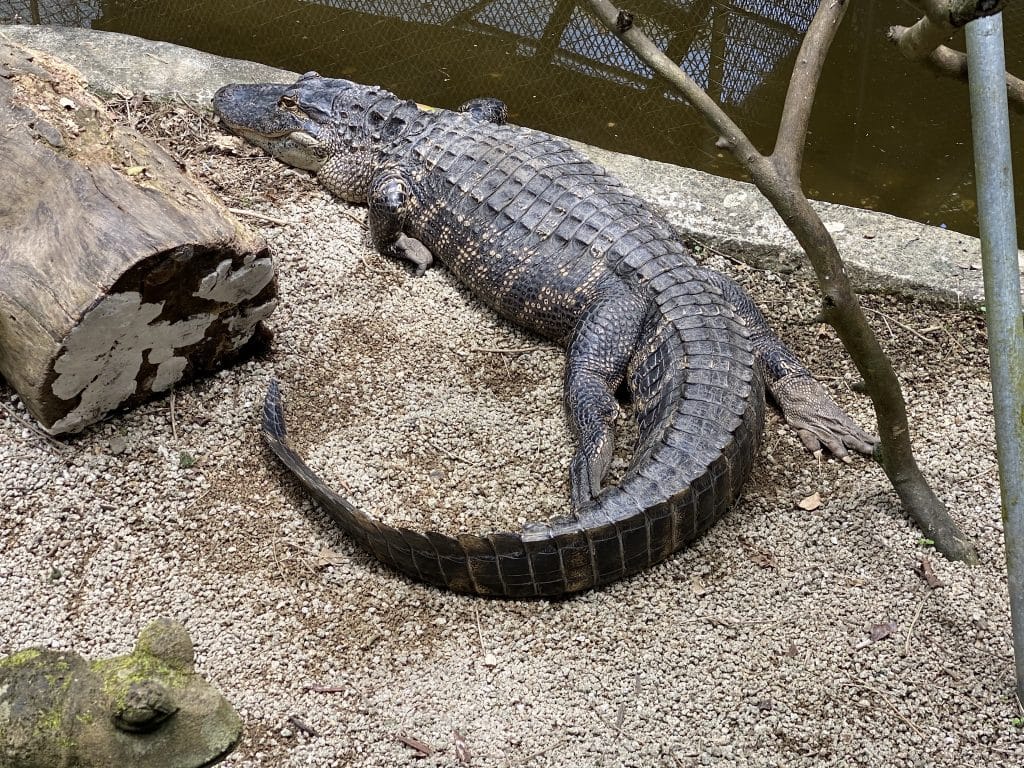
Mauritius is generally known as a safe travel destination - like this Foreign Office confirmed, especially when compared to many other countries. However, like anywhere else in the world, there are certain security risks that travelers should be aware of:
Criminality: The crime rate in Mauritius is relatively low, especially when it comes to violent crimes against tourists. However, smaller crimes such as pickpocketing or burglaries can occur, especially in larger cities or busy places. It is advisable to pay attention to personal belongings and leave valuables in the hotel safe.
road traffic: Road traffic can be challenging for tourists who are not used to driving on the left side of the road. Some roads, particularly in rural areas, may be in poor condition. It is recommended not to drive at night and to always be careful.
natural hazards: Mauritius is located in an area occasionally affected by cyclones, particularly between January and March. It is important to stay informed about possible weather warnings and follow the advice of local authorities.
ocean currents: Although the beaches of Mauritius are beautiful and inviting, they can have dangerous currents. Some beaches, particularly on the south coast, may experience strong undercurrents. It is important to heed warning signs and swim in patrolled areas.
animals and insects: While there are no dangerous large animals in Mauritius, there are some insects and marine life that can sting or bite. It is advisable to protect yourself from mosquitoes and watch out for sea urchins and other potentially dangerous creatures when snorkeling or diving.
What is the best time to travel to Mauritius?
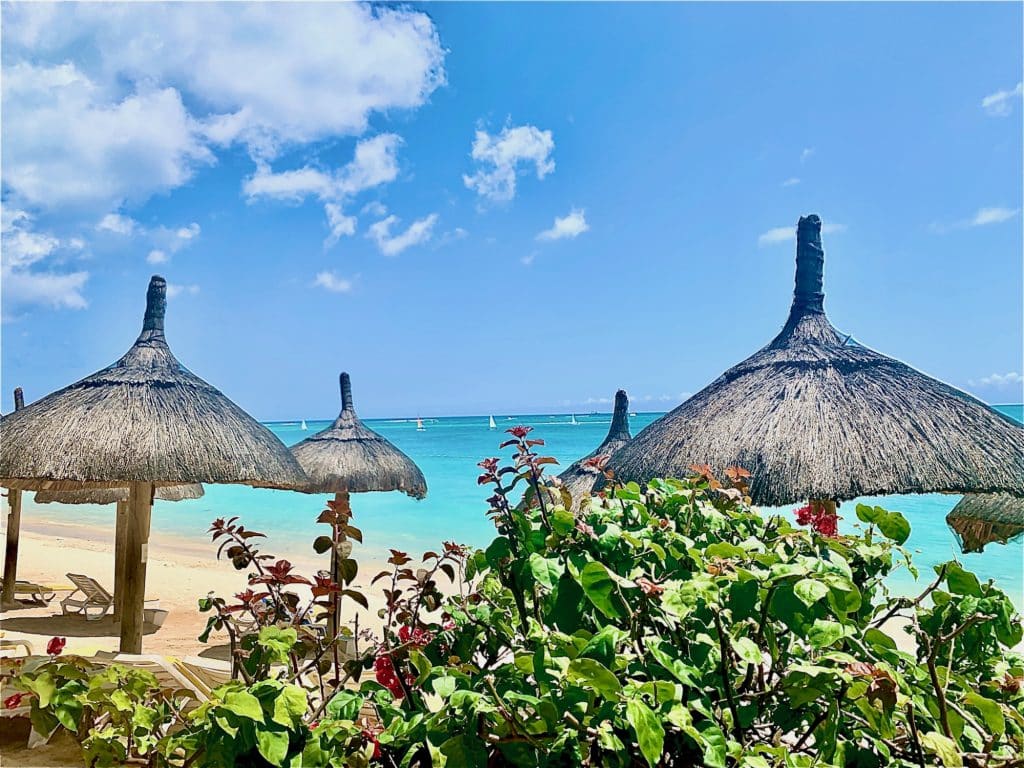
The best time to visit Mauritius depends on your preferences and planned activities, as the island's climate is quite pleasant all year round. Nevertheless, there are differences in the seasons:
May until October: This is the Mauritian winter but temperatures are still warm and pleasant, mostly between 20°C and 25°C. This is the driest time of the year, with cooler nights. It is ideal for activities such as hiking and exploring as the humidity is lower. The water temperatures are slightly cooler, but are still between 22°C and 25°C.
November to April: These are the summer months in Mauritius. Temperatures are between 25°C and 30°C, and it is wetter. It is also the time when cyclones can occur, especially between January and March. Water temperatures are warmer during this time, often around 27°C or 28°C.
If you have specific activities in mind:
Surf: The best time is June to August when the waves are at their best on the west and southwest coasts.
Diving: Visibility is best between December and March, although diving is possible all year round.
fishing: Big fish fishing is best between October and April, especially for marlin.
bird watching: The best time to see many migratory birds is from October to April.
If you're looking for the best compromise between good weather and fewer tourists, then the transitional months like May and November are often ideal. Ultimately, the best time to travel to Mauritius depends on your individual preferences. It's always a good idea to keep the weather and possible climatic events in mind when planning your trip.
Where is it most beautiful in Mauritius?
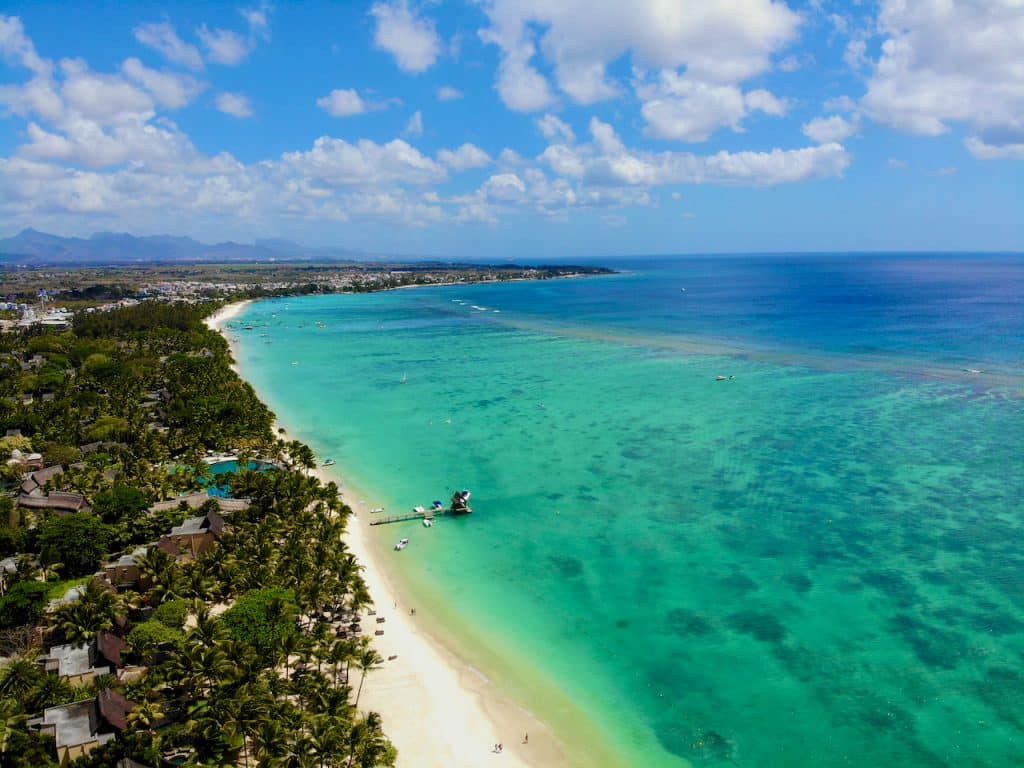
Where is Mauritius most beautiful? Here are some places to visit on your trip:
– Grand Baie: If you are looking for a lively place, Grand Baie is the place for you. There is a wide range of restaurants, shops and nightclubs here. But the main reason so many tourists come here is the beautiful beaches. Grand Baie's public beach is one of the most beautiful on the island and ideal for swimming, snorkeling or just sunbathing.
– Flic en Flac: Flic en Flac is another popular seaside resort in Mauritius. The beach stretches for several kilometers and offers fine white sand, clear water and a relaxed atmosphere. There are many restaurants and bars in the area where you can try delicious Mauritian cuisine.
-LeMorne: Le Morne is a small town on the southwest coast of Mauritius. Here you will find some of the most beautiful beaches on the island. Le Morne beach is particularly popular with kite surfers, but it is also ideal for swimming and sunbathing. The landscape around Le Morne is also breathtaking and offers many opportunities for hikes and excursions.
– Black River Gorges National Park: If you like hiking and love nature, you should definitely visit Black River Gorges National Park. The park is 68 square kilometers in size and offers breathtaking scenery with waterfalls, mountains and rainforests. It is also home to some of the rarest animal species in the world, such as the Mauritius falcon.
– Port Louis: Port Louis is the capital of Mauritius and offers many cultural and historical attractions. The National Museum of Mauritius, the Central Market and Fort Adelaide are located here. The port of Port Louis is also worth seeing and offers spectacular views of the city.
Basically it can be said that there are many beautiful places in Mauritius that are worth visiting. Grand Baie and Flic en Flac are ideal for beach lovers, while Le Morne is perfect for hikers and adventurers. The Black River Gorges National Park offers a unique natural experience and Port Louis is a must for culture lovers.
How long should you stay in Mauritius?
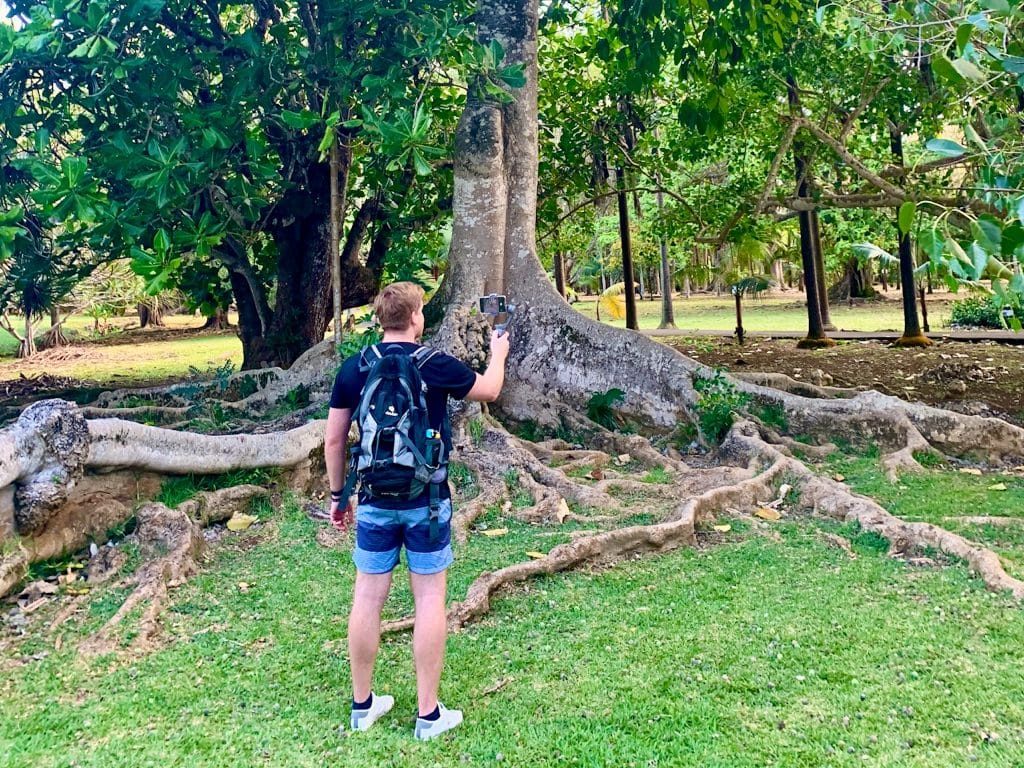
How long should you stay in Mauritius? Of course, this question depends on personal preferences, budget and purpose of the trip. Mauritius is a diverse island that has a lot to offer: from beautiful beaches to tropical nature to cultural sights. Some possible factors that can affect travel duration are:
1. Entry requirements: No visa is required for German citizens if they are staying in Mauritius for less than 90 days. The passport must be valid beyond the period of stay and have at least one blank page. Upon arrival, the passport is stamped, allowing stay for 60 days. Anyone who wants to stay longer must apply for an extension or leave the country and re-enter the country. Anyone who exceeds the length of stay is liable to prosecution.
2. The travel time: Mauritius has a tropical climate with warm temperatures all year round. The best time to visit is from May to December, when it is drier and less humid. January to April is wetter and hotter and cyclones can occur. The water temperature is between 23 and 28 degrees Celsius. The peak season is October to April, when prices are higher and there are more tourists.
3. The travel destinations: Mauritius has an area of around 2.040 square kilometers and is therefore relatively small. You can easily explore the island by car or bus. There are many interesting places to visit such as the capital Port Louis, the Botanical Garden of Pamplemousses, the Black River Gorges National Park, the Chamarel Waterfall and the Seven Colored Earth, the Le Morne Brabant mountain, the Île aux Cerfs or the Île aux Aigrettes. Depending on your interests, you can choose different activities, such as hiking, snorkeling, diving, surfing, golfing or just relaxing on the beach.
4. The Budget: Mauritius is not a cheap destination, but there are ways to save money. For example, you can stay in a vacation rental or guest house instead of a hotel or resort. You can also cook yourself or eat in local restaurants instead of expensive tourist places. You can also use public transport or rent a car instead of taking taxis. You should also consider additional costs, such as entrance fees, tips or souvenirs.
My recommendation is to spend at least a week to ten days on the island to get a good overview and enjoy different aspects. Two to three weeks are better. If you have more time, you can stay for two to three weeks or longer to explore the island more intensively and relax. Mauritius is extremely diverse, so a longer stay is definitely worth it.
What do you need for a Mauritius vacation?
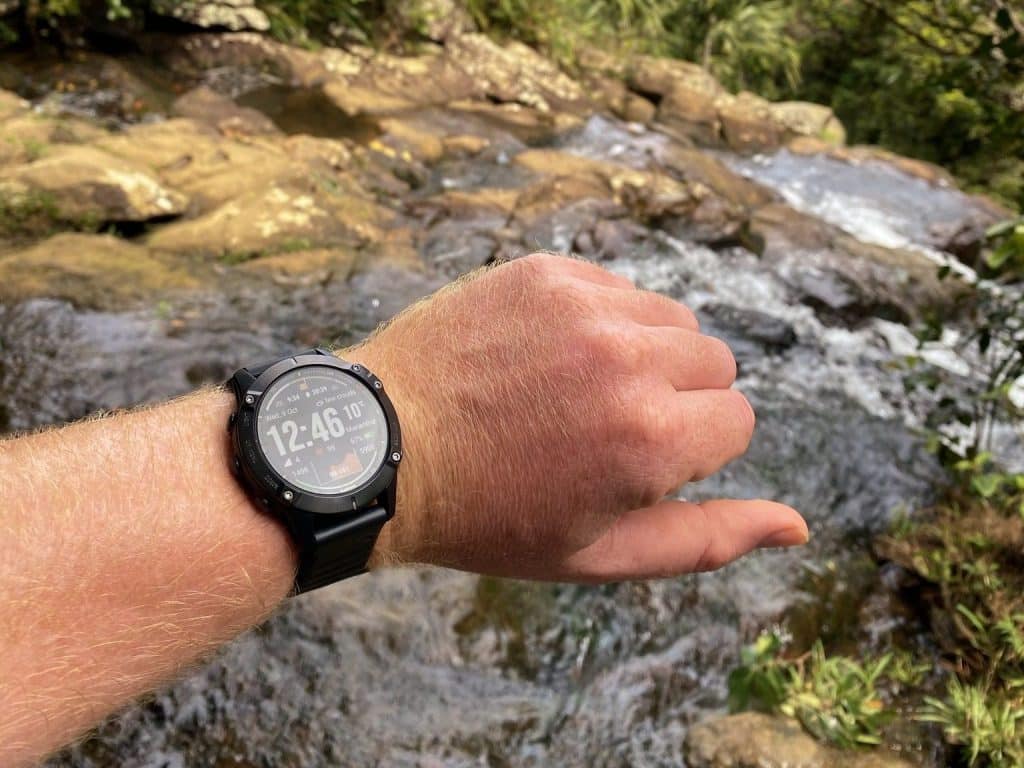
When vacationing in Mauritius, you should pack some essential items and make preparations to make your stay as comfortable and smooth as possible. Here is a list of things you might need for your Mauritius vacation:
1. travel documents:
Passport: Make sure it is valid for at least six months after your return trip.
Visa: Find out about the visa requirements in advance. Many nationalities do not require a visa for stays of up to 90 days, but this is subject to change.
Travel Insurance: It is advisable to purchase travel insurance that covers both medical emergencies and things like trip interruption or loss of luggage.
Flight tickets and accommodation bookings.
2. Money and means of payment:
Mauritian Rupee (MUR): It is helpful to have some cash for small expenses upon arrival.
Credit and debit cards: Most major hotels, restaurants and stores accept them.
Travel adapter for sockets: Socket types C, G and I are used in Mauritius.
3. Clothing:
Light summer clothing: shorts, T-shirts, summer dresses.
Swimwear: For the beach and the pool.
Sun hat and sunglasses: To protect you from the strong tropical sun.
Light jacket or sweater: For cool evenings or places with air conditioning.
Hiking boots or comfortable shoes: If you plan to explore or hike the island.
Sarong or Shawl: Can be useful for covering yourself in temples or religious sites.
4. Other:
Sunscreen: A must in the tropics.
Insect repellent: Particularly important when staying in rural areas or on hikes.
Snorkeling equipment: If you plan to explore the underwater world independently.
Personal medication and a small first aid kit.
Reusable water bottle: To reduce plastic waste.
Camera, cell phone and possibly a waterproof case or bag for water sports activities.
Is Mauritius really beautiful?
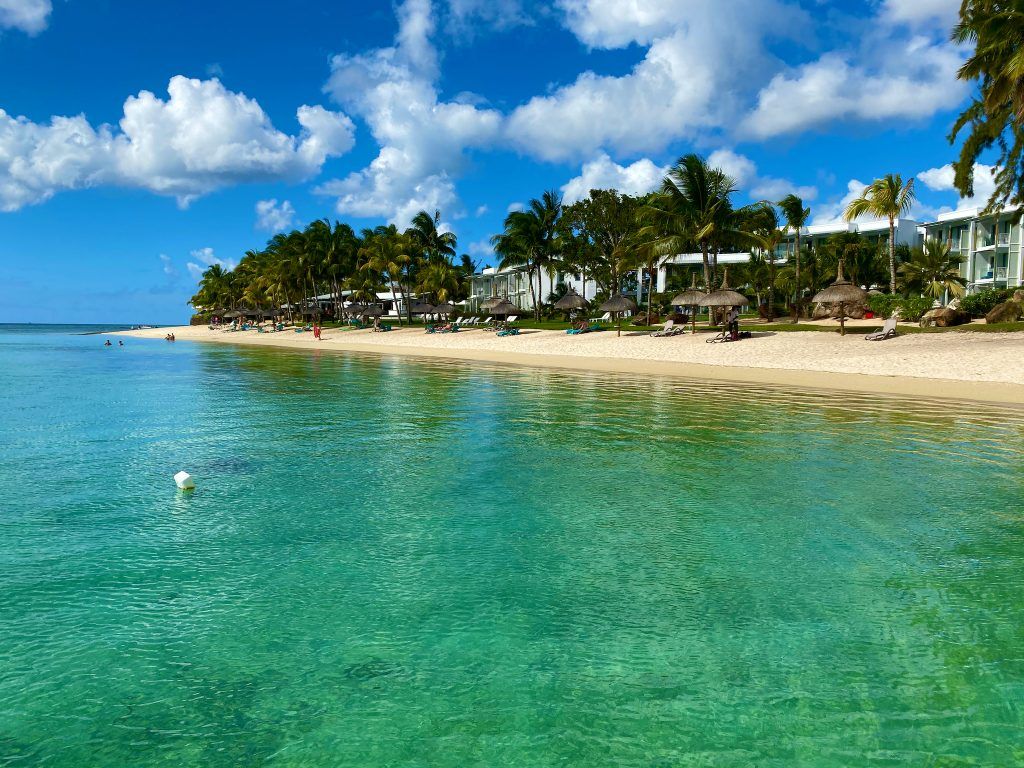
Mauritius is often described as one of the paradises on earth. However, the beauty of the island is not only subjective but is based on various natural, cultural and historical features. Here are some reasons why many people find Mauritius to be exceptionally beautiful:
beaches: Mauritius is famous for its idyllic white sand beaches surrounded by turquoise waters and protective coral reefs. Places like Trou aux Biches, Belle Mare and Pereybere are just some of the spectacular beaches the island has to offer.
Landscape and nature: Away from the coasts, Mauritius offers a diverse landscape with green sugar cane fields, dense forests, waterfalls and impressive mountains such as Le Morne Brabant. The Black River Gorges National Park is home to many endemic plants and animals.
Underwater World: The coral reefs around Mauritius are home to a rich and colorful underwater world. Snorkelers and divers can experience an impressive variety of marine life, from colorful fish to turtles.
Cultural diversity: The cultural mix of Creole, Indian, African, French and Chinese influences makes Mauritius a melting pot of cultures. This is reflected in architecture, festivals, music and cuisine.
Historic sites: From colonial houses to old sugar factories to UNESCO World Heritage Sites, there are many places of historical significance in Mauritius.
People: The locals in Mauritius are known for their hospitality and friendliness. Their smiles and warmth contribute significantly to the positive experience of many travelers.
Unique attractions: Mauritius also offers some unique natural phenomena, such as the “Seven Colored Earth” of Chamarel or the “underwater waterfall” (an optical effect) off the coast of Le Morne.
Of course, beauty is subjective and varies depending on individual preferences. While many people find Mauritius paradisiacal and breathtakingly beautiful, it ultimately depends on their own experiences and expectations. However, it is undeniable that Mauritius offers many elements that are generally considered “beautiful”.
Where does it rain the least in Mauritius?
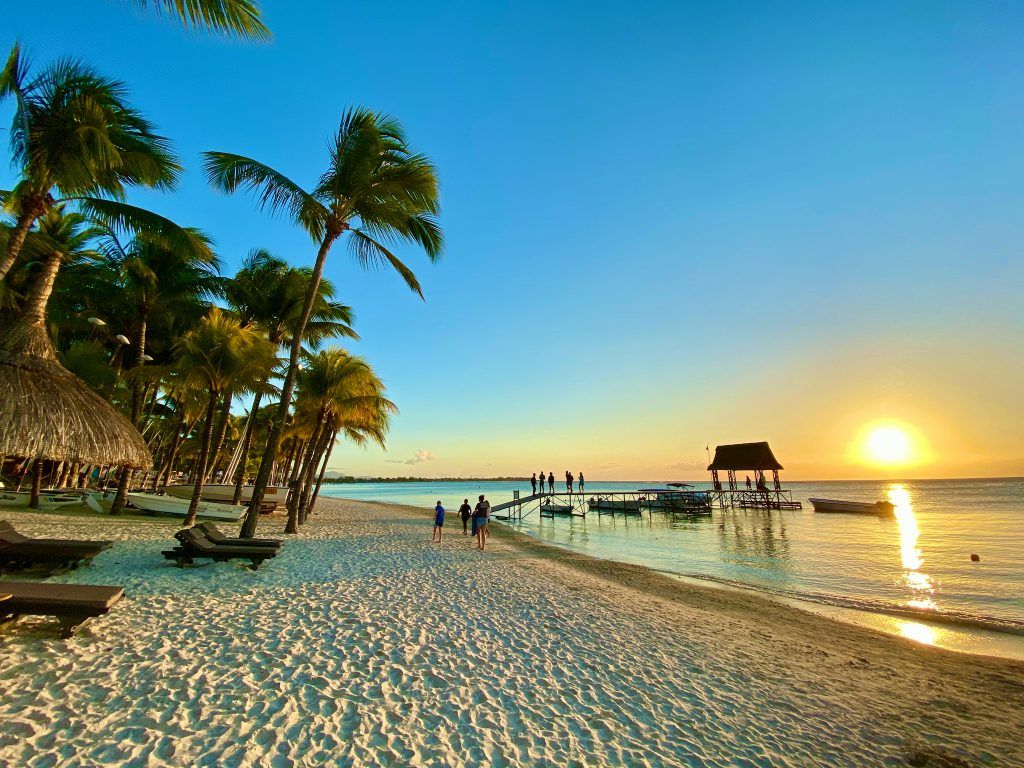
Mauritius has a tropical climate, and although it can rain all year round, there are certain regions that tend to receive less rainfall. If you're looking for places that are less rainy on average, consider the western and northwestern parts of the island. Places like Flic en Flac, Tamarin and Grand Baie tend to receive less rain than the East and Southeast. This is because the central mountains of Mauritius act as a barrier to the winds coming from the east and southeast. These winds bring moist air that condenses on the mountains and falls as rain. Therefore, the west and northwest are often in the rain shadow of these mountains and tend to be drier.
How long does it take to fly from Germany to Mauritius?

The flight time from Germany to Mauritius varies depending on the departure location, the route chosen and the specific airline. Direct flights from Germany, especially from airports such as Frankfurt am Main or Munich, to Mauritius usually take between 11 and 12 hours. If there are no direct flights or you are flying from another German airport, stopovers or longer routes may result in a longer overall travel time. It is always advisable to check the exact flight times and any stopovers when booking a flight.
How much does 14 days Mauritius cost?
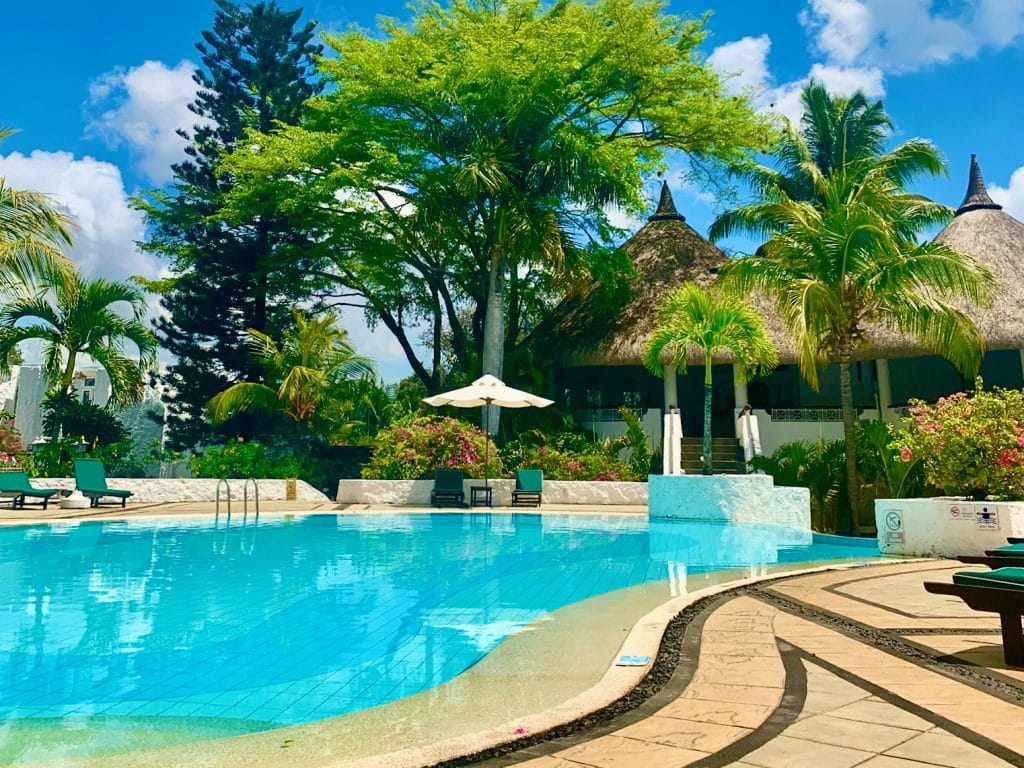
That is very different. The question "How much does 14 days in Mauritius cost?" is not that easy to answer. You can actually have a relatively cheap holiday in Mauritius. A flight from Central Europe to Mauritius costs between 700 and 1500 euros in economy class. You can rent a holiday apartment on the island for as little as 25 euros a night. But you can easily spend 250 or 1000 euros per night in an upscale hotel. I would say that, with a bit of skill and luck, you could put together the cheapest option for a holiday in Mauritius for just under 1000 euros. But it is also much, much more expensive.
Where is it warmest in Mauritius?
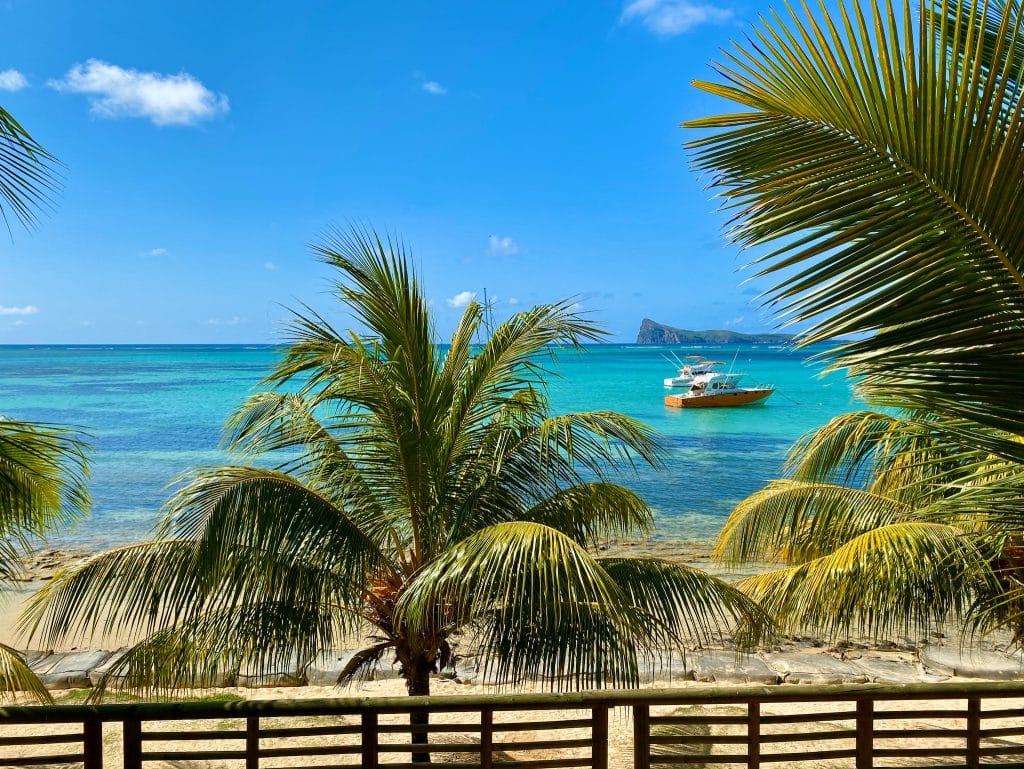
In Mauritius, the temperature differences between the different regions are not too great as it is a relatively small island. However, there are still some trends:
Coastal regions: The coastal areas are generally warmer than the interior of the island. Temperatures on the coast are often between 25°C and 31°C, depending on the time of year.
West and North Coast: The west and north coasts, including places like Grand Baie, Flic en Flac and Tamarin, tend to be warmer and drier than the east and south of the island.
Interior of the island: The central highlands, including areas such as Curepipe and the Chamarel plateau, are cooler, particularly at higher elevations. Here temperatures can be noticeably lower than on the coast, especially in the cooler months.
East and south coast: These regions receive more precipitation due to prevailing winds from the southeast and can be slightly cooler than the west and north.
Which coast in Mauritius in October?
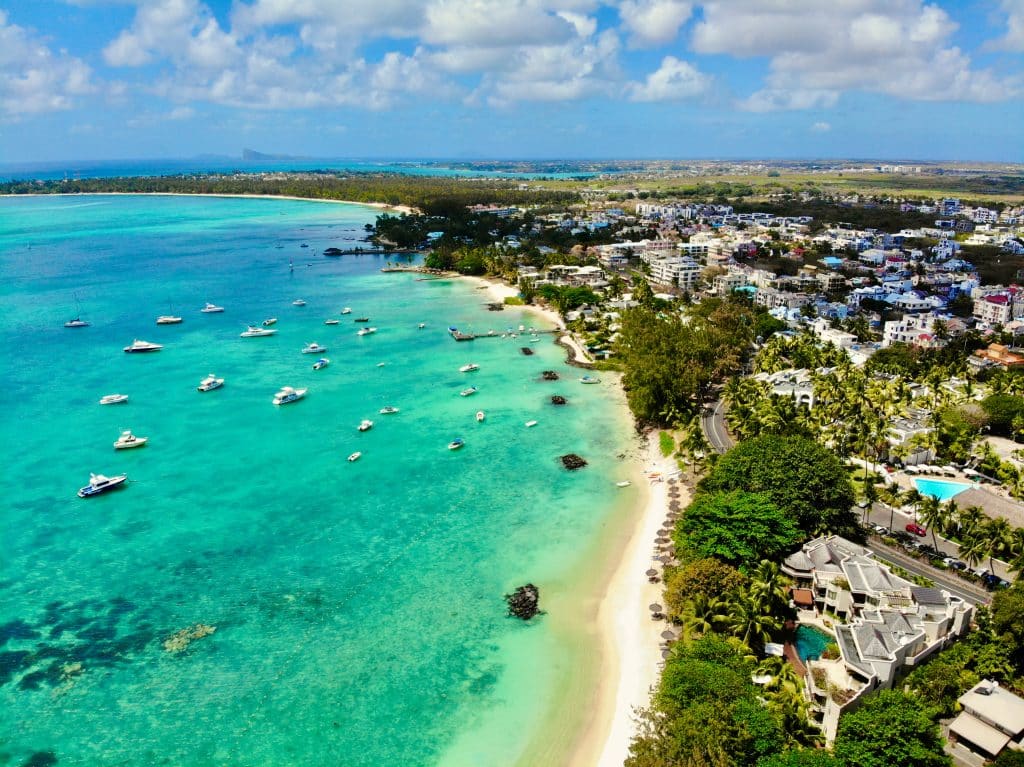
In October, Mauritius is in the transition from winter to summer. Temperatures begin to rise and there may be more precipitation, especially towards the end of the month. When choosing a coast in Mauritius to stay in October, there are a few factors to consider:
Weather:
West and northwest coast (e.g. Grand Baie, Flic en Flac, Tamarin): These areas are generally warmer and drier than the rest of the island. They offer a good choice if you prefer sunny and not too rainy weather.
East and southeast coast (e.g. Belle Mare, Mahebourg): These coasts can be windier in October as the southeast trade winds are still in effect. You may also receive a little more rain.
Activities:
The windier conditions on the east coast in October are ideal for water sports such as kitesurfing.
For diving and snorkeling, the west and north coasts as well as some parts of the south coast are recommended, as the sea here is often calmer and clearer.
Tourism:
October is not the busiest month in Mauritius, but with school holidays in some countries, popular tourist areas can get a little busier. If you're looking for peace and solitude, consider less touristy places or smaller resorts.
What clothes for Mauritius?

For a stay in Mauritius, where the climate is tropical and temperatures range between warm and hot all year round, I recommend the following clothing and equipment:
Light summer clothing:
T-shirts, tops and shorts
Long light trousers and skirts
sundresses
Beachwear:
Swimsuits or bikinis
Beach tunics or shirts
Flip flops or sandals
sun hat or baseball cap
sunglasses
Shoes:
Comfortable hiking shoes or sandals if you plan to hike or explore the island.
Closed shoes for the evening or visits to restaurants and hotels.
Light rain protection: A lightweight raincoat or folding umbrella, especially in the rainy season.
Protection from the sun:
Sun cream with a high sun protection factor
After sun lotion
Lip balm with sunscreen
For cooler evenings: A light sweater or cardigan, especially if you're staying at higher elevations or inland.
More formal clothing: Some restaurants or hotels may have a more formal dress code, especially for dinner. So it might be useful to take one or two more formal outfits with you.
Dimensions of the pouch: A waterproof bag or backpack for day trips and to protect your belongings from sudden downpours.
Other:
Mosquito repellent
Snorkeling equipment if you plan to snorkel and prefer to bring your own equipment.
Mauritius is a laid-back island, and the dress code is quite relaxed in most areas. However, it is important to adhere to cultural norms, especially when visiting religious sites. In such cases, it is advisable to cover shoulders and knees and dress respectfully.
What do you have to do in Mauritius?
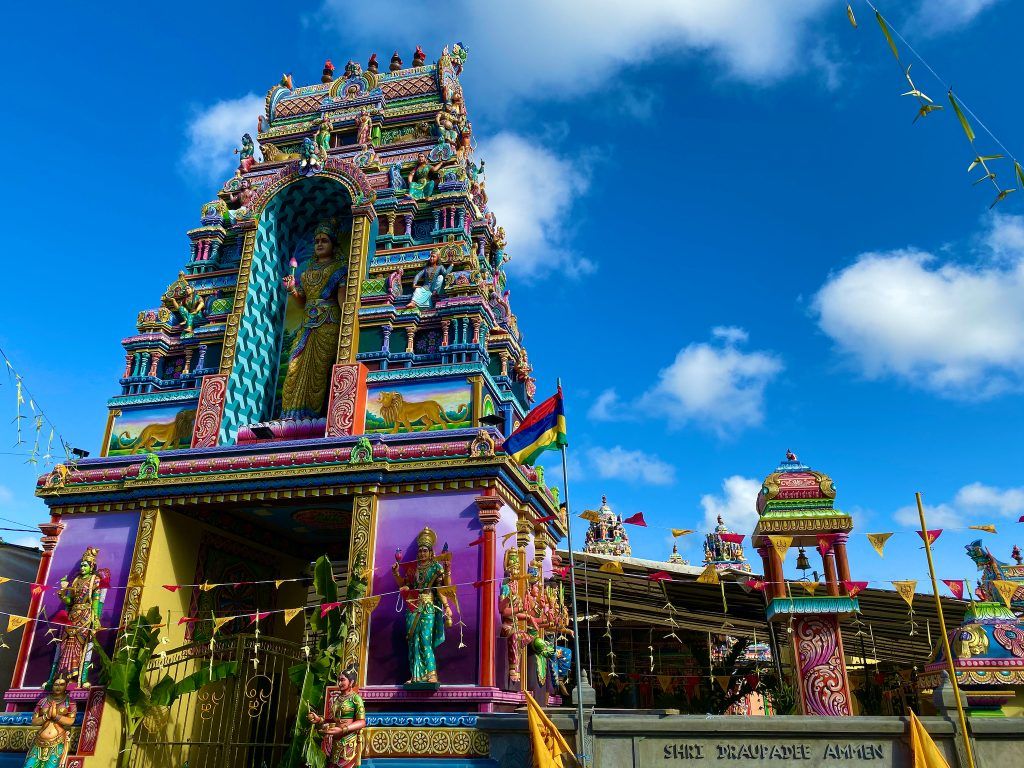
Mauritius offers a variety of experiences that make it a unique travel destination. When you visit the island, there are some things you should definitely do or experience to get the most out of your stay:
Enjoy beaches: Spend relaxing days on some of the most beautiful beaches such as Trou aux Biches, Belle Mare, Flic en Flac or Le Morne.
Watersports: Take the opportunity to go windsurfing, kitesurfing, diving, snorkeling or sailing. The clear water and coral reefs offer ideal conditions for water sports enthusiasts.
Black River Gorges National Park: Hike through the island's largest national park to discover endemic flora and fauna and enjoy impressive views.
Pamplemousses Botanical Garden: Marvel at the giant water lilies and variety of tropical plants in the oldest botanical garden in the southern hemisphere.
Chamarel: Visit the “Seven Colored Earth”, a natural phenomenon with colorful sand dunes, and the impressive Chamarel Waterfall.
Le Morne Brabant: Climb this UNESCO World Heritage mountain, which is not only a significant historical site but also offers breathtaking views.
Tea plantations: Discover the green hills of tea plantations, such as those of Bois Chéri, and enjoy a tea tasting.
Grand Bassin (Ganga Talao): This holy lake is an important pilgrimage destination for Hindus outside India. The impressive Shiva statue and temple complex are definitely worth a visit.
Isle of Aigrettes: Visit this small island off the southeast coast to see rare and endemic species reintroduced through a conservation program.
Port Louis: Explore the capital of Mauritius, visit the market, the Caudan Waterfront Shopping Center and the Blue Penny Museum.
Try Creole cuisine: Don't miss the opportunity to taste traditional Mauritian dishes that are a mix of Creole, Indian, French and Chinese influences.
Experience Sega Dance: This traditional dance and music of Mauritius is an important part of the local culture.
Visit to a rum distillery: Learn about how rum is made on the island and enjoy a tasting.
These are just a few of the many activities and sights Mauritius has to offer. The diversity of the island makes it possible to combine both relaxed beach days and active exploration tours.
Is driving in Mauritius dangerous?
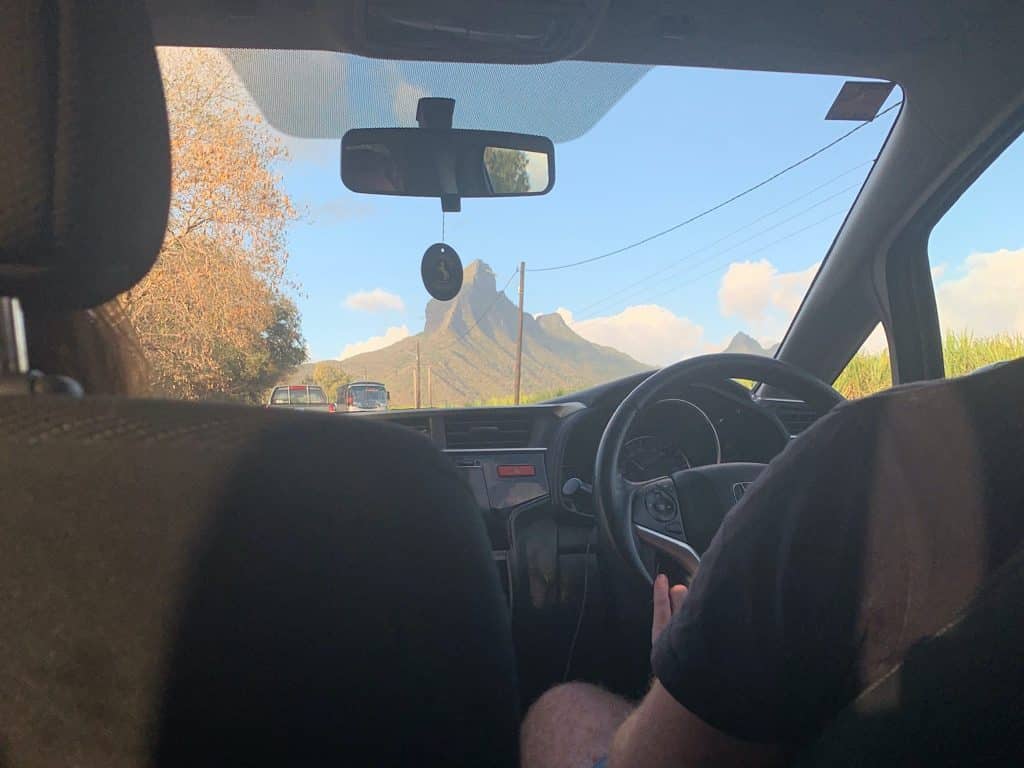
Driving in Mauritius differs in a few ways from what many travelers are used to in their home countries. Whether it is considered dangerous depends on individual driving skills and experience. Here are some things you should keep in mind when driving in Mauritius:
left-hand traffic: As in Great Britain and some other countries, in Mauritius people drive on the left side of the road.
Road conditions: Many main roads are in good condition, but there are also secondary roads that may have potholes. Especially in rural areas, roads can be narrow, winding and not well lit.
driving style: Some locals can be seen as a bit aggressive or unpredictable, especially in busier cities. It is important to pay attention and drive with foresight.
Traffic rules: It is essential to obey traffic rules, respect speed limits and be careful when overtaking, especially on winding roads.
Fußgänger: Be careful near pedestrian crossings, as pedestrians often cross the street without much warning.
Animals on the street: In rural areas, animals may cross the road. You should drive carefully and slowly, especially at night.
Public buses: Buses can sometimes stop suddenly to let passengers on or off. Therefore, always keep your distance and be prepared for such maneuvers.
Parking: In some areas, especially in busy cities, parking may be difficult to find. Follow parking regulations and avoid parking in no-parking zones.
Navi: A GPS or navigation app like Google Maps can be helpful, especially if you're in lesser-known areas.
If you're unsure about driving yourself, there are alternatives like taxis or drivers you can hire for the day. However, many tourists – like me – choose to self-drive in Mauritius and have positive experiences doing so as long as they are careful and aware of the differences.
Is Mauritius boring?
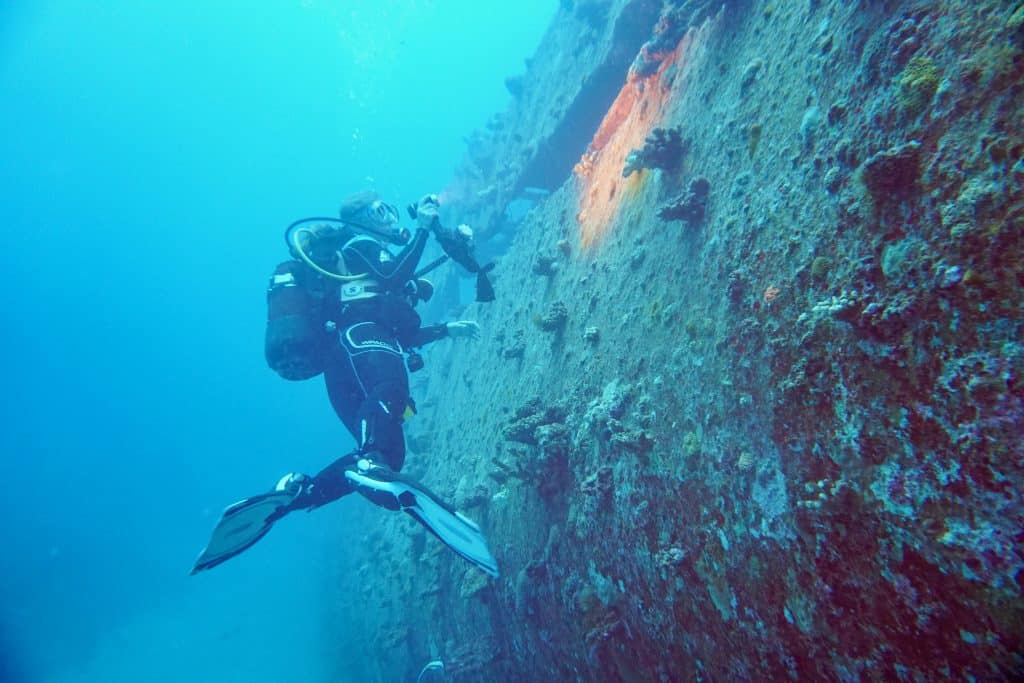
Whether Mauritius is perceived as “boring” depends largely on the individual preferences and expectations of the traveler. Mauritius is known for its picturesque beaches, crystal clear waters, rich culture and a variety of activities. Here are some things Mauritius has to offer:
beaches: Mauritius offers some of the most beautiful beaches in the world, ideal for sunbathing, swimming and water sports.
Watersports: You can enjoy activities like snorkeling, diving, windsurfing, water skiing and deep sea fishing.
Nature & hiking: There are numerous hiking trails, waterfalls and the impressive Black River Gorges National Park.
Culture: Mauritius has a rich cultural history with influences from Africa, India, Europe and China. You can visit temples, mosques and churches or take part in cultural festivals.
Golf: There are some world-class golf courses on the island.
Culinary experiences: Mauritian cuisine is a melting pot of different culinary traditions, and there are many restaurants and street stalls where you can sample the local cuisine.
boat trips: There are various islands and lagoons around Mauritius that you can visit by boat.
Wildlife: Apart from the many sea creatures, you can see rare birds and plants in nature reserves or visit the Casela Natural Park.
shopping: Mauritius offers a range of shopping options, from modern malls to traditional markets.
Relaxation: If you just want to relax, many resorts offer spa treatments and wellness facilities.
For some who are looking for constant thrills and a very hectic vacation schedule, the laid-back island atmosphere of Mauritius might come across as “boring.” But for those looking for a mix of relaxation, culture, nature and activities, Mauritius offers a lot of variety.
In the end, it depends on what you want from your vacation and how you plan your stay. If you stay active and take advantage of the many opportunities the island offers, you'll likely find that Mauritius is anything but boring.
Is Mauritius a poor country?
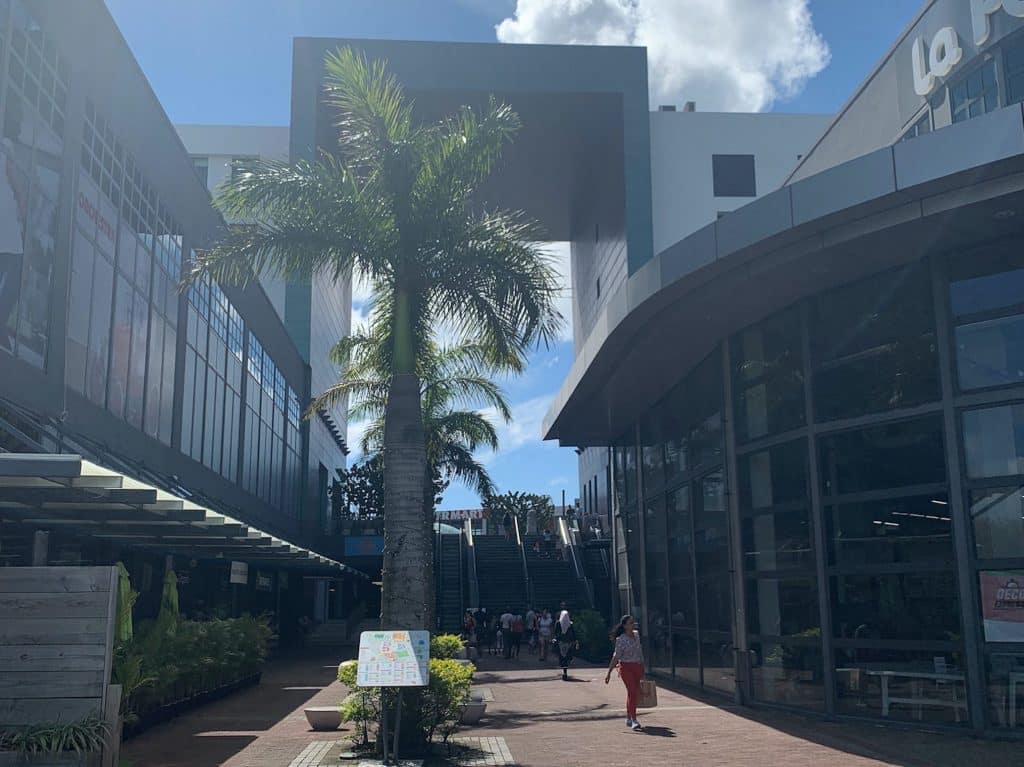
Mauritius is often viewed as an African model of success in terms of economic development and social progress. Since its independence from Britain in 1968, Mauritius has made remarkable progress in diversifying its economy away from a reliance on sugarcane farming towards areas such as textiles, tourism and financial services. Some factors about the economic situation of Mauritius:
Economic growth: Mauritius has experienced steady economic growth since independence. The gross domestic product (GDP) per capita has increased over the years, making it one of the higher in the African region.
Diversified economy: As mentioned earlier, Mauritius has successfully diversified its economy. Tourism, textile production and financial services have become important pillars of the economy.
Social indicators: The country has invested in education and health, giving it a relatively high literacy rate and life expectancy compared to other countries in the region.
challenges: Despite economic progress, there are still challenges. These include dependence on foreign markets and raw materials, the threat of climate change to the island and social challenges such as youth unemployment.
Income inequality: Like many countries, Mauritius has income inequalities, with some population groups having more resources and opportunities than others.
foreign trade: Mauritius is heavily dependent on imports, especially for food and energy. This makes the country vulnerable to external shocks and price fluctuations.
Compared to many other African countries, Mauritius is considered a middle-income country and has made significant economic and social progress in recent decades. However, the country remains faced with certain economic and social challenges.
Does Mauritius have nice beaches?
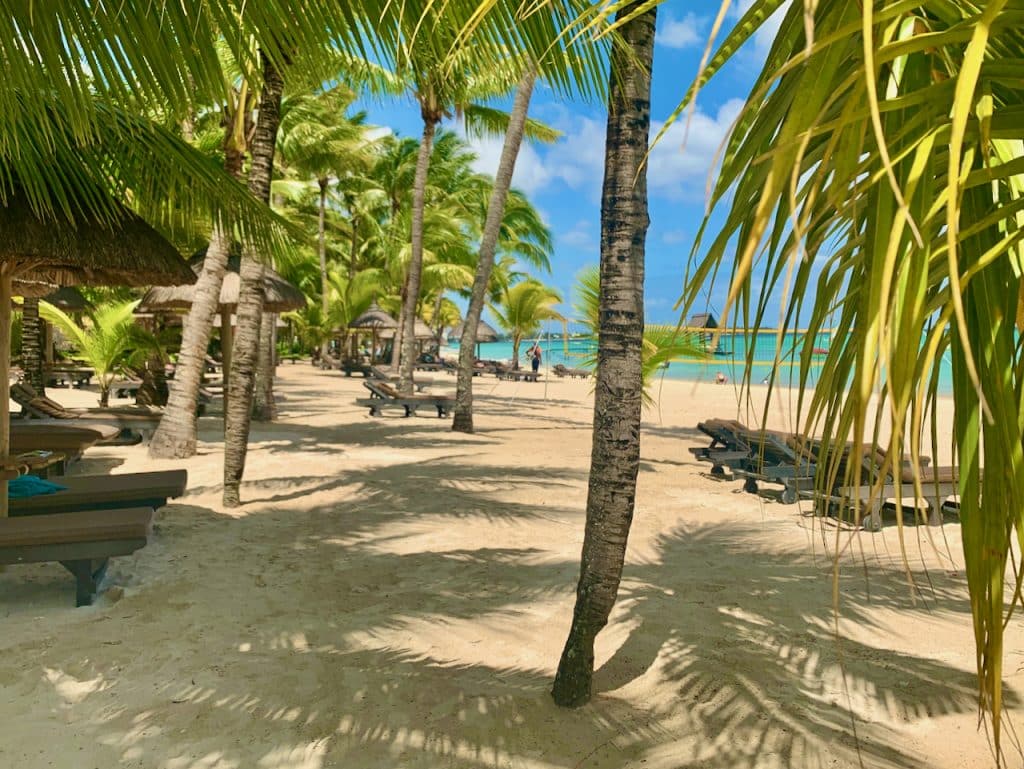
Yes, Mauritius is known worldwide for its breathtaking beaches. The island is surrounded by an almost continuous coral reef, creating calm lagoons and sparkling white sandy beaches. Some of the most famous and beautiful beaches in Mauritius are:
Beautiful Mare: This beach on the east coast of Mauritius is known for its fine white sand and turquoise water. It is ideal for long walks and sunbathing.
Trou aux Biches: This northwest beach is popular not only for its crystal clear waters and white sand, but also for its proximity to numerous hotels and resorts.
Grand Baie: This is one of the most popular beaches in the north and a center for water sports and boat tours. There are many shops, bars and restaurants nearby.
Le Morne: Located on the southwest coast, this beach is known for its breathtaking views of the Le Morne Brabant mountain. The area is also a UNESCO World Heritage Site and a hotspot for windsurfers and kitesurfers.
Pereybere: This small beach between Grand Baie and Cap Malheureux is particularly popular with families as it is safe and suitable for swimmers.
Flic en Flac: Located on the west coast, this beach is particularly popular with locals and tourists alike. It offers a long coastline perfect for walking and the water is ideal for snorkeling.
Snake Island: This small island off the east coast of Mauritius is a popular day trip destination and offers some of the island's best beaches and snorkeling spots.
Blue Bay: Located in the southeast, this beach is famous for the neighboring Marine Park, where you can discover an impressive variety of marine life while snorkeling or diving.
This list is just a small overview of the many wonderful beaches that Mauritius has to offer. The island offers both busy beaches with a variety of activities and quieter, more secluded beaches for those seeking relaxation and seclusion. Each beach has its own unique charm and features. There is something for everyone!
Which side of Mauritius?
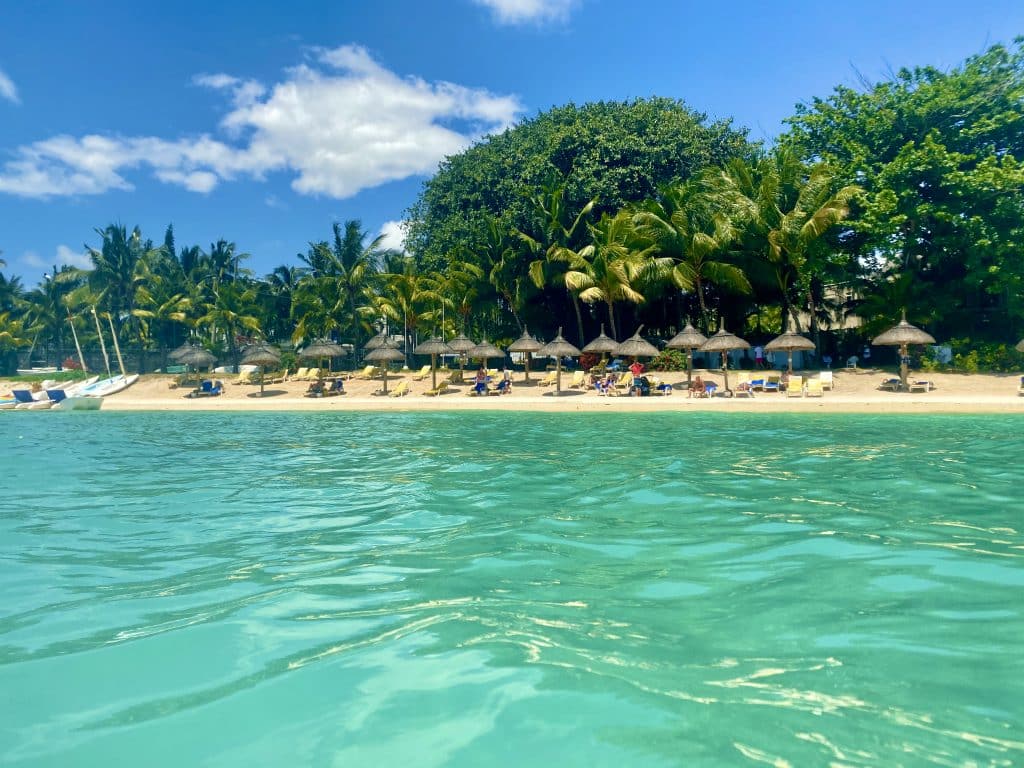
Deciding which side of Mauritius to visit depends on personal preferences and interests. Here is an overview of the different coastal regions of Mauritius and their special features:
north:
Climate & Environment: The north is often slightly warmer and drier than other parts of the island.
beaches: Well-known beaches such as Grand Baie, Trou aux Biches and Pereybere can be found here.
Activities: This region has a lively nightlife, numerous restaurants, shopping and water sports.
east:
Climate & Environment: The east coast can be windier, making it ideal for water sports such as windsurfing and kitesurfing.
beaches: Belle Mare, Palmar and the Île aux Cerfs are particularly popular.
Activities: Luxury resorts, golf courses and the possibility of boat trips to nearby islands.
south:
Climate & Environment: The south is often harsher and less developed than the rest of the island.
beaches: Wilder coastlines and breathtaking cliffs, like Gris Gris.
Activities: Visit to Black River Gorges National Park, Chamarel Waterfall and Seven Colored Earths.
West:
Climate & Environment: The west coast is often sunny and protected from the prevailing winds.
beaches: Flic en Flac is one of the most famous beaches. Tamarin is popular with surfers.
Activities: The Casela World of Adventures Park, snorkeling and diving in the coral gardens.
inland:
Climate & Environment: The central highlands are cooler than the coastal regions.
points of interest & sights: The sacred lake Grand Bassin, the tea plantations of Bois Chéri and the Vallée de Ferney nature reserve.
Ultimately, the decision as to which side of Mauritius to visit depends on your own interests. If you're looking for nightlife and activities, the north could be ideal. For quieter, more natural experiences, the south or the inland would be suitable. The West Coast offers a mix of sun, sea and activities, while the East Coast is known for its luxurious resorts and unrivaled charm. It could also be a good idea to stay in several places and get to know the different facets of Mauritius.
Where is it nicer Seychelles or Mauritius?
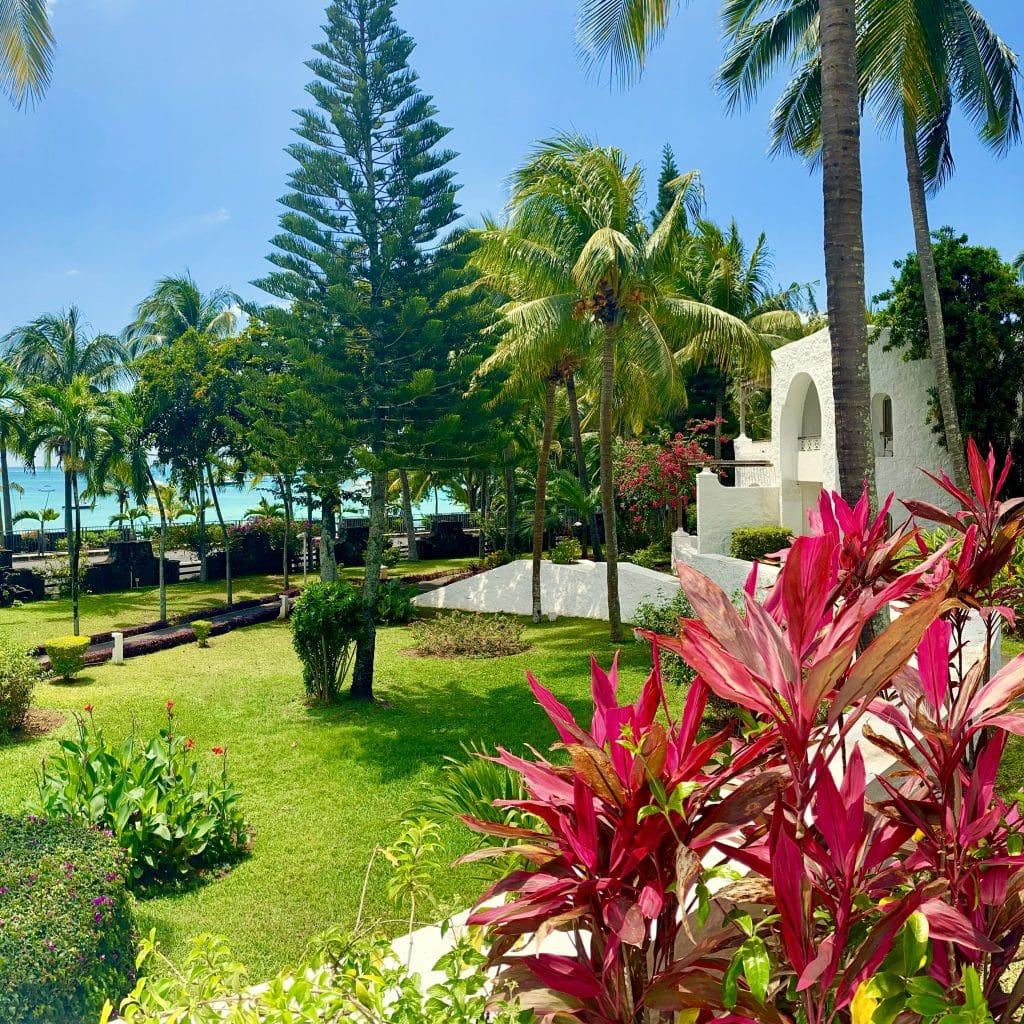
Whether the Seychelles or Mauritius are more beautiful depends on individual preferences. Both destinations are tropical Indian Ocean paradises with stunning beaches and rich culture. Here are some differences and features that might help you decide:
Seychelles:
Archipel: The Seychelles consists of 115 islands, with each island having its own unique charm. This enables a variety of experiences and the discovery of different islands within one trip.
beaches: The beaches, particularly on the main islands of Mahé, Praslin and La Digue, are world famous for their granite rocky coasts, crystal clear waters and fine white sand.
Nature Conservation: The Seychelles are home to some rare bird species and have exceptional nature reserves such as the Vallée de Mai on Praslin.
Climate & Environment: The Seychelles has a year-round tropical climate with no distinct rainy or dry season.
price level: In general, the Seychelles can be more expensive, especially if you want to stay on more remote islands.
Mauritius:
Diverse cultures: Mauritius has a mix of Indian, African, Chinese and European influences reflected in the culture, cuisine and architecture.
Activities: In addition to the beaches, Mauritius also offers a variety of activities such as golfing, hiking in the national parks, water sports and cultural excursions.
beaches: The beaches are mostly protected by coral reefs, making them ideal for swimming and water sports activities.
Island interior: Mauritius also has impressive landscapes inland, including waterfalls, rainforests and the famous Le Morne Brabant mountain.
price level: Mauritius offers a wide range of accommodation options, from luxury resorts to cheaper guesthouses, making it accessible to different budgets.
Conclusion:
If you're looking for pristine, quiet beaches and natural surroundings, Seychelles could be a better choice.
If you're looking for a combination of beach holidays, culture, activities and perhaps a touch of luxury, Mauritius might be a better fit for you.
Ultimately, both destinations are breathtakingly beautiful, and the choice really depends on what you're looking for in a vacation. It might also be worth considering visiting both places on different occasions!
How long does a direct flight to Mauritius take?
We flew almost 12 hours from Paris to Mauritius. Flight time varies slightly. From Central Europe, it takes about eleven to 12 hours to fly non-stop to Mauritius. With a stopover it takes a little longer.
Who flies direct from Germany to Mauritius?
With some airlines such as Eurowings, Condor and Lufthansa you can fly directly from Germany to Mauritius. With stopovers, there are also many other travel options that are basically just as pleasant - for example with Air France via Paris or Emirates via Dubai.
Mauritius – where to go on vacation?
Mauritius offers a wealth of impressive locations for an unforgettable vacation. Choosing the best place depends on your preferences and interests. Here are some popular regions and locations you might consider:
Grand Baie:
Activities: A lively place with many shops, restaurants and bars. It also offers numerous water sports options.
beaches: Popular beaches include Grand Baie Beach and the nearby Pereybere Beach.
Accomodation: From luxury hotels to budget accommodation.
Trou aux Biches:
beaches: One of the best beaches in Mauritius, ideal for families.
Activities: Snorkeling and diving are particularly popular here.
Accomodation: A range of resorts and villas.
Beautiful Mare:
beaches: A long, white sandy beach ideal for swimming and sunbathing.
Activities: Many of the resorts offer water sports activities.
Accomodation: Especially luxury resorts.
Le Morne:
Landscape: At the foot of the impressive Le Morne Brabant, a UNESCO World Heritage Site.
beaches: Beautiful beaches ideal for windsurfing and kitesurfing.
Accomodation: From exclusive resorts to smaller accommodations.
Flic en Flac:
beaches: A long sandy beach that is great for walking.
Activities: Close to Casela World of Adventures, a nature and leisure park.
Accomodation: A mix of luxury resorts and cheaper options.
Port Louis:
Culture: The capital of Mauritius with a mix of colonial architecture, museums and markets.
shopping: The Central Market and many boutiques and shops.
Accomodation: Mainly city hotels.
South coast (e.g. Bel Ombre):
Landscape: Rougher and less developed, making them more authentic and calm.
Activities: Visit Frederica Nature Park or Heritage Golf Club.
Accomodation: Fewer but very exclusive resorts.
When deciding where you want to go on holiday, you should consider what activities you want to do, whether you are looking for a lot of hustle and bustle or more peace and quiet and what your budget is. No matter where in Mauritius, the island offers breathtaking beauty and diversity.
Mauritius – which country does it belong to?
Mauritius is an independent island nation in the Indian Ocean. It does not belong to any other nation. Mauritius gained independence from Great Britain on March 12, 1968 and became an independent nation within the Commonwealth of Nations. Mauritius has been a republic since 1992. The country includes the main island of Mauritius as well as some smaller islands and atolls. The capital and largest city is Port Louis.
How much does two weeks in Mauritius cost?
The cost of a two week holiday in Mauritius varies depending on your travel style and budget. Below are some rough estimates for different spending areas:
-Accommodation: The cost of accommodation can vary greatly depending on the location, season and type of accommodation. Typically, 3-star hotels cost between 50 and 100 euros per night, while 4-star hotels can cost between 100 and 200 euros per night. Luxury hotels can cost up to several thousand euros per night. For a two-week stay, the overnight costs can be between 700 and 14.000 euros.
-Transport: The cost of transportation depends on how you get around the island. A rental car costs around 40-50 euros per day, taxis are relatively expensive. There are also buses that are relatively cheap but not always reliable. For a two-week stay you have to expect transport costs between 150 and 1.000 euros.
-Food and Drink: The cost of food and drink depends on where you eat and drink. Simple meals usually cost between 5 and 15 euros per person, while upscale restaurants can be more expensive. Alcoholic drinks are usually more expensive than non-alcoholic drinks. For a two-week stay, the cost of food and drink can be between 300 and 1.500 euros.
-Activities: The cost of activities depends on the type of activity. Water sports and excursions can be relatively expensive, while admission to museums and parks is usually cheaper. For a two-week stay, the cost of activities can range between 200 and 1.500 euros.
In total, the cost of a two-week stay in Mauritius can range between 1.500 and 18.000 euros, depending on your specific needs and preferences. It is advisable to prepare a budget in advance and compare the prices of different accommodations and activities to keep costs within reasonable limits.
Mauritius – how long?
Basically, I would always say: stay in Mauritius as long as possible – preferably for a lifetime. How long you stay in Mauritius depends on many factors, such as how many places you want to visit, what activities you plan to do and how much money you have available. In general, however, we recommend at least a week to see the island's main attractions and enjoy the charms of Mauritius.
During a week in Mauritius you can visit some of the island's most beautiful beaches such as Grand Baie, Flic en Flac or Belle Mare, explore the local markets and historical sites in Port Louis and Mahebourg, visit the Black River Gorges National Park to discover the unique nature to experience the island, go kite surfing or diving.
If you have more time, say two weeks or more, you have the opportunity to explore even more of the island and immerse yourself in different activities. You could visit the port of Mahébourg, explore the 7 colored soils of Chamarel, or take a trip to Ile aux Cerfs to practice water sports like parasailing and jet skiing.
If you're planning a quieter vacation, maybe a week or a little more is enough to enjoy the beach, visit the local markets, and sample the island's cuisine. However, if you are planning more activities and experiences, you should plan at least two weeks or more to get the most out of your trip.
What can I do in Mauritius in 3 weeks?
In three weeks in Mauritius you have enough time to discover both the main attractions and some of the island's lesser-known treasures. Here are some suggestions on how you can plan your three-week stay in Mauritius:
Week 1: Discover the north
Grand Baie: Stroll through this beach and tourist center, enjoy shopping, dining and nightlife.
beaches: Lie on some of the most beautiful beaches like Trou aux Biches and Mont Choisy.
Pamplemousses Botanical Garden: Admire the historic garden with an impressive selection of plants.
Cap Malheureux: Visit this picturesque fishing village and enjoy the views of the northern islands.
Trip to the Northern Islands: Take a boat trip to islands like Île Plate and Îlot Serpent.
Week 2: Explore the south and east
Le Morne Brabant: Hike this UNESCO World Heritage Site and enjoy breathtaking views.
Black River Gorges National Park: Roam through the island's largest national park and see the impressive gorges and waterfalls.
Chamarel: Marvel at the Seven Colored Earth and the Chamarel Waterfall.
Ile aux Aigrettes: Tour this nature reserve and discover many native plants and animals.
Mahébourg: Stroll through this traditional village and visit the lively market.
Beaches in the East: Relax on beaches like Belle Mare and Palmar and consider taking a day trip to Île aux Cerfs.
Week 3: The West and the Interior
Flic en Flac: Enjoy this popular beach and consider diving and snorkeling trips.
Casela World of Adventures: Experience a day at the theme park, try safaris, quad bike rides or a zip line.
Tamarin: Explore the salt pans and look for dolphins in the bay.
Port Louis: Roam the capital, visit the Central Market and the Blue Penny Museum.
Moka and the Central Plains: Discover the heart of Mauritius, tour tea plantations and enjoy the views from Curepipe and the Trou aux Cerfs volcanic crater.
additionally:
Sample Creole delicacies at various restaurants and street stalls. Participate in cultural events or festivals.
Try water sports, perhaps kite surfing or deep sea fishing.
Treat yourself to spa treatments or wellness offers. With three weeks in Mauritius you can get to know the island thoroughly and still have enough time to relax.
Have you already been to Mauritius or are you planning your first trip to the paradise island? What do you expect from your vacation? And what do you really want to see there? Share your experiences in the comments.


0 Comments